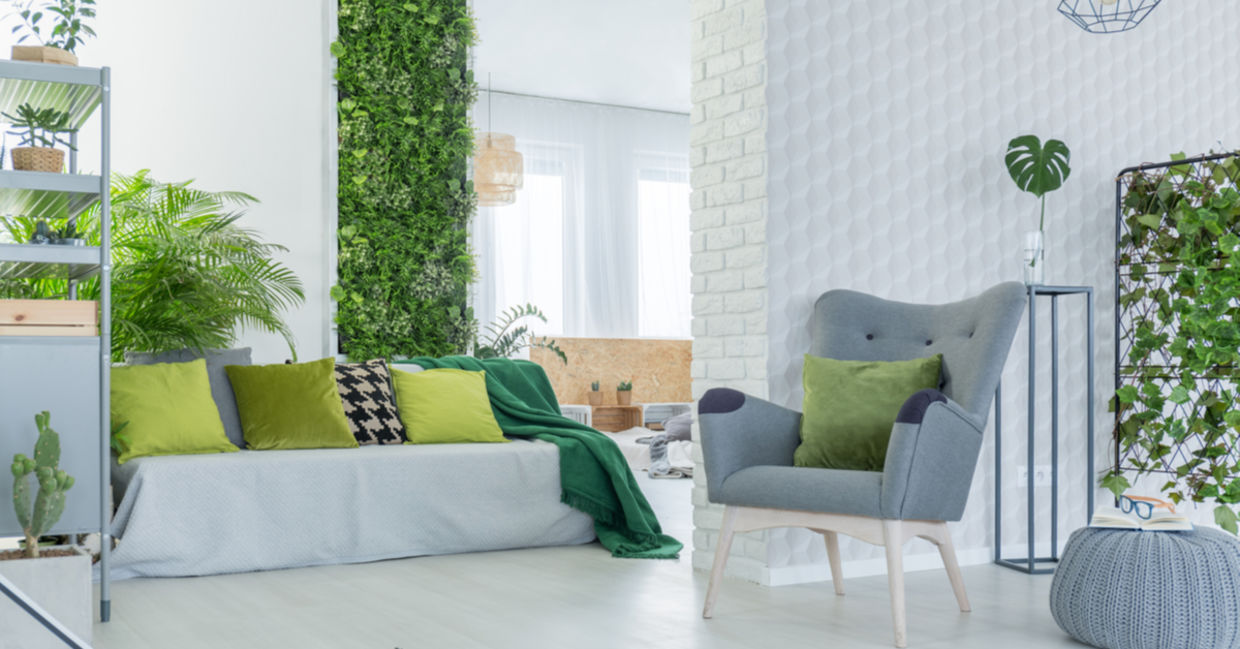
(Photographee.eu / Shutterstock.com)
Our homes have always been our refuge where we are safe and out of the elements. That's why we build solid walls of masonry, wood or other solid substances. Old homes were leaky; air came in through chimneys and open doors and windows. To save energy, we fill every crack and crevice and make our homes as airtight and impermeable as possible.
If we want to live greener, we can add a passive or active solar panel and if we are innovative, even a living green roof that will provide a healthier and cooler environment in a world that's slowly getting hotter.
But to live in a sustainable world, that will not be enough. A new forward-looking school of architecture embraces permeability (porosity) and a more natural and fluid relationship between inside and outside spaces.
Dr. Rachel Armstrong, Professor of Experimental Architecture at the Department of Architecture, Planning, and Landscape at Newcastle University calls this new approach Living Architecture.
“To develop a more sustainable relationship with the natural world, we need to allow chemical exchanges that take place within our living spaces, and between the inside and the outside," she wrote in an article for Fast Company.
This approach was researched at the Green Center in Cape Cod, Massachusetts, by ecologists John Todd, Nancy Jack Todd, and William McLarney, who wanted to reconceive building spaces as part of a self-sustaining ecosystem like the spaceship earth sci-fi concept.
They were actually visionaries whose research into solar power, organic agriculture, and bio shelter designs are the basics of the new permeable architecture.
Armstrong writes that to incorporate permeability into architecture you have to begin with the composition of the building and new advances in organic construction materials have made that possible. Building material can be made of Mycotecture, a mushroom-like fungus material that is stronger than concrete or BioMASON bricks that are grown from bacteria. David Benjamin constructed his Hy-Fi tower from mycelium bricks as part of MoMA's Young Architects Program in 2014. The structure was completely combustible.
"Builders are starting to explore the possibilities of strategically placing 'hard [impermeable]' and 'soft [permeable]' interfaces within a structure to regulate the delivery of resources and organic responses to these inputs," wrote Armstrong.
An example of this is the Bio-Intelligent Quotientor BIQ House in Hamburg Germany. The 15-apartment building's façade is made up of thin-walled tanks filled with microalgae that generate electricity and heat.
The EU has funded the Living Architecture Project (LIAR) to create semi-permeable designs. The project's goal is to transform bathrooms, kitchens and commercial spaces into bioreactor spaces by using walls that contain microbial systems and are capable of extracting resources from sunlight, wastewater (grey water), and air to generate oxygen, proteins, and biomass, essentially a smart living environment. The project is still in the prototype stage.
Armstrong sees a future made up of commercial buildings that can recycle water, fertilize green roofs and purify air to make healthier and more natural environments. Taking it one step further, bioreactors may be able to recycle detergents from wastewater, produce fertilizers for gardens, and even provide nutrient-rich food supplements. She sees the end result as a more ethical and symbiotic relationship between buildings and the natural world.
Living Architecture is no longer a futuristic vision of science fiction writers. Visionaries are making it a reality. The home of the future will be smart, green, and alive too.
YOU MIGHT ALSO LIKE:
This Designer Believes in Furnishing a Family’s Future
6 Tips To Be More Sustainable in Your Home
The City of the Future is Becoming a Reality in Florida







